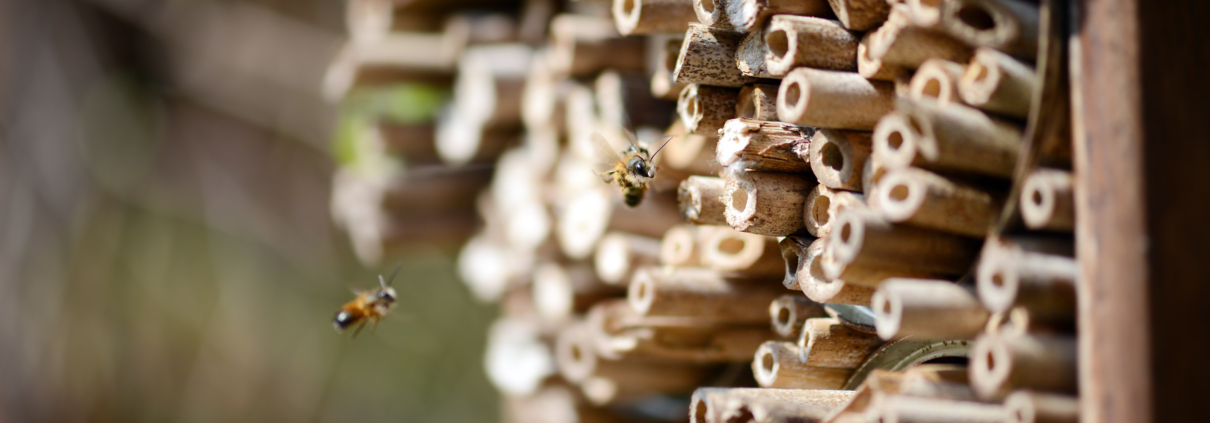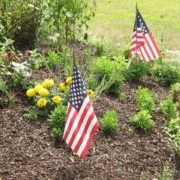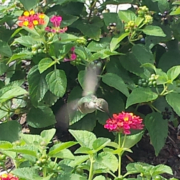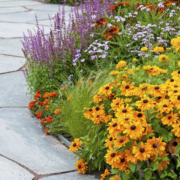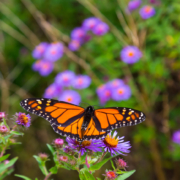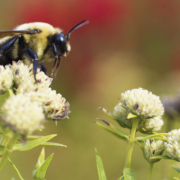What We Learned by Building Insect Hotels
Earlier this month at our annual staff retreat, my fellow WHC colleagues and I stepped into our members’ shoes for an afternoon and built our own insect hotels. The process of designing and assembling our insect hotels was a fun, hands-on learning experience for all of us.
For some of us it was an introduction to insect hotel hotels, and we all found out more about the kinds of features you can incorporate to benefit native bees and other beneficial insects. The array of natural and manmade materials we had available also inspired us to get creative with our designs.
Our finished hotels included wooden blocks and logs with drilled holes, bundles of reeds and paper tubes where solitary can lay their eggs in the holes and then seal up the entrance with mud or leaf litter. We also added other dried plant material such as twigs, dried leaves, dried grasses, moss, seed pods and pinecones, where other beneficial insects like ladybugs, ground beetles, lacewings and hoverflies—all important predators of pest insects—will seek cover. In addition, some of the structures included materials like bricks and slabs of dark slate, which will warm up in the sun and provide basking areas for insects.
This exercise led to some fantastic insights about how to make insect hotels a successful part of your corporate conservation program, and we wanted to share these insights to help you with building one for your site:
- Insect hotels are a great team-building exercise. They allow team members to work together on a project, while also providing an opportunity to use their specific talents to create a better final product. Some folks may have a knack for creating an attractive or imaginative design, for example, while others may feel better equipped for more hands-on activities like constructing the frame for the structure.
- It is really helpful to decide ahead of time what species you want to attract or what species in your area might benefit from an insect hotel, so that you don’t waste time constructing features or gathering materials that need to be changed or don’t end up getting used.
- In a similar vein, determine how the structure will be installed, mounted or hung before laying out the design, rather than figuring it out as an afterthought and potentially having to jury-rig the installation.
- Leftover materials need not got to waste – employees can use them to make their own insect hotel back at home.
- Bigger is not necessarily better. For those new to the planning and construction of insect hotels, it might actually be easier to take on smaller structures.
- You can add whimsical or artistic features or use a story about the kinds of bugs that visit the hotel to elicit the imagination of learners, especially young children, and help them better remember the experience.
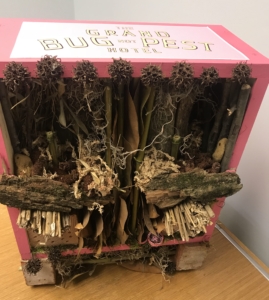 If you want to learn more about how to build your own insect hotel, watch our webinar from earlier this year, Build a Bug Palace. And when you do build your own insect hotel, be sure to enter our “Best Of” Insect Hotel contest by August 1, 2018. We’ll be announcing the winners of the challenge at this year’s Conservation Conference, where you’ll also have a chance to see our staff’s insect hotels in person.
If you want to learn more about how to build your own insect hotel, watch our webinar from earlier this year, Build a Bug Palace. And when you do build your own insect hotel, be sure to enter our “Best Of” Insect Hotel contest by August 1, 2018. We’ll be announcing the winners of the challenge at this year’s Conservation Conference, where you’ll also have a chance to see our staff’s insect hotels in person.
